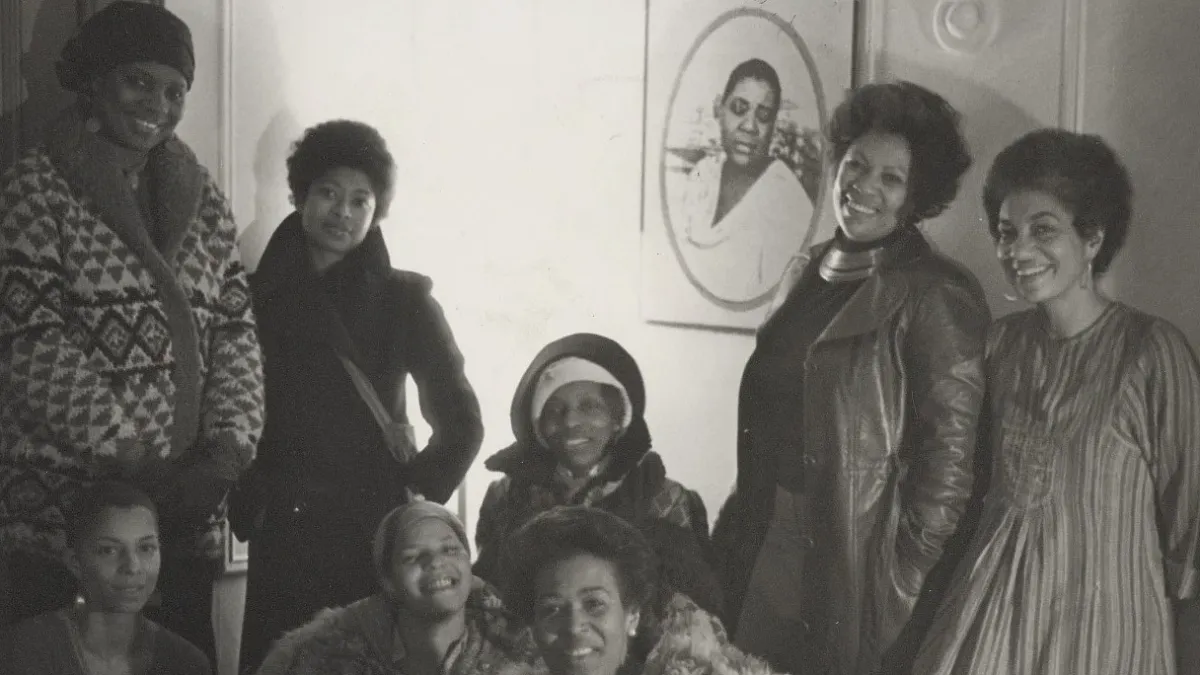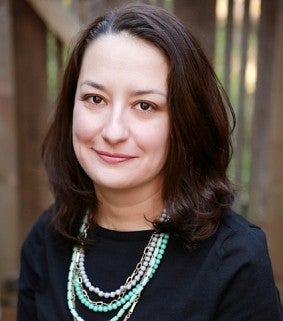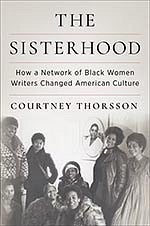
Experiential Learning | Research & Innovation | Community Impact | Career Preparation | Teaching Excellence | 21st Century Liberal Arts | Building Community | Good Vibes | CAS Spotlights | All Stories | Past Issues

January 8, 2024
‘The Sisterhood’ Celebrates Black Feminist Writing
In 2004, Courtney Thorsson, an associate professor of English in the College of Arts and Sciences, first learned about a photo of a group of Black women that would take her nearly 20 years to investigate.
This photo wasn’t an ordinary group of people. Gathered in a prewar New York apartment, the black-and-white photo included Toni Morrison, June Jordan and Alice Walker. They called themselves the Sisterhood, and from 1977 to 1979, they met to talk about writing, culture and liberation.
Thorsson’s new book, The Sisterhood: How a Network of Black Women Writers Changed American Culture, brings together documents, close readings and interviews to show readers what happened at those gatherings.
The book does more than capture the happenings of the multi-year gathering, says Mary Helen Washington, a distinguished professor at the University of Maryland. Thorsson has preserved documents and small journals that published work by Black women writers of that time during the ’70s and ’80s.
“This mosaic that she puts together is a literary history,” Washington says. “The word literary history sounds so high-minded and so elegant and important, but literary history is just the pieces that we put together and what we pay attention to. And she has paid attention to something that most other people didn't notice.”
Putting together a history

Taking the photo Thorsson saw in 2004 and bringing it to life in The Sisterhood would take years of research and writing to illustrate how these Black writers would go on to transform political, academic and literary spheres.
“It became increasingly clear to me that this was a pretty unique period in literary history,” Thorsson says. The dramatically increased visibility of Black women writers in the last quarter of the twentieth century “didn’t happen by accident. The Sisterhood is part of the story of how it happened.”
To uncover the story behind the Sisterhood would take time and resources. In 2018, Thorsson received a $60,000 grant from the National Endowment for the Humanities, which supported her three-pronged approach to research: conducting close readings of literature, traveling to archives, and interviewing members of the group.
The Sisterhood’s narrative brings those research methods together, reflecting on literature by Morrison, for example, and then tying in research gleaned from archives throughout the country.
Thorsson’s book also includes interviews with some of the group’s members, including Judith Wilson, who would go on to become a prominent art historian; Margo Jefferson, a Pulitzer Prize-winning cultural critic and author of two recent, award-winning memoirs; Renita Weems, a womanist theologian; and Patricia Spears Jones, a poet.
“Every person I corresponded with really confirmed for me this sense that they knew the Sisterhood was important,” Thorsson says. “They recognized the amount of cultural capital in the room when they got together. They knew that other members of the group were going to do really big things.”
The legacy of the Sisterhood

Although the Sisterhood only met for a few years, its members have had a far-reaching impact. By the end of the 1970s, the civil rights movement was waning, and the US was experiencing a rise of right-wing political ideologies.
“The civil rights and Black Power movements had clearly not produced the kind of gains for Black people that activists hoped for,” Thorsson says. “So, the women in the Sisterhood and other groups quite rightly saw culture as the place to intervene.”
Jefferson, a professor of practice at Columbia University, remembers the Sisterhood gatherings and how the atmosphere varied. Sometimes there was easygoing chatter and laughter. Other times there could be serious conversations if a member was struggling with issues such as depression, parenting, racism or sexism at work.
“It felt both informal and formal,” Jefferson recalls. “There would be literary chat, political talk—what I would call strategizing about the jobs we had in the larger media—but also just what it meant in so many ways to be entering as Black women, as groups of black women—not just us, but other women, our friends, our colleagues—entering this previously impenetrable, largely impenetrable, cultural and social and political space.”
The Sisterhood does more than offer readers insight into a short but influential period. Thorsson’s book has been lauded for providing a history of an era of Black literature that will benefit academics in the future.
“I see this as a model for doing literary history: collecting the information, analyzing the information, drawing conclusions from it,” Washington says. “It's a framework that the next generation of academics can take and find other literary histories throughout the world.”
Read more about Thorsson’s book in 'Oregon Quarterly.' To order a copy of her book, visit the Columbia University Press webpage.
Oregon Humanities Center will host Thorsson for a wine chat 5:30 p.m. Thursday, Jan. 25, at Capitello Wines, at 540 Charnelton Street in Eugene. She will also read from 'The Sisterhood' and have a book discussion with English Professor Mat Johnson at Powell’s Books on Feb. 4 in Portland.
—Henry Houston, MA ’17 (international studies) is a communications coordinator for the College of Arts and Sciences.
